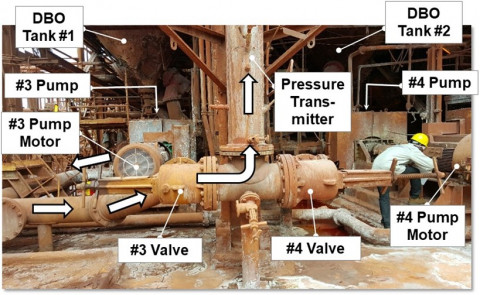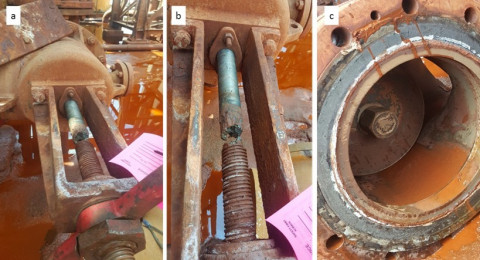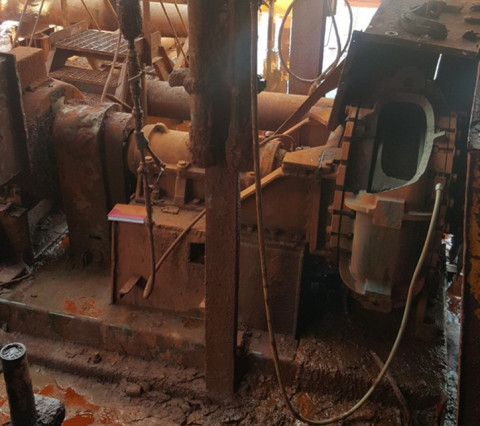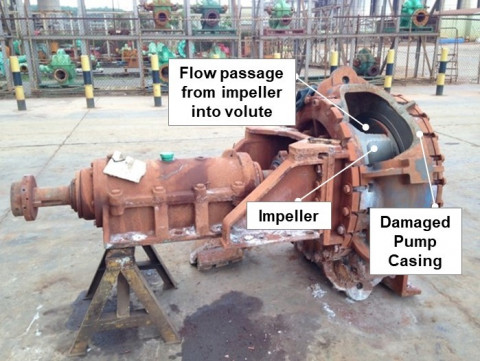AFT Blog
When Waterhammer Makes Things Explode
Last month I presented a technical paper that was both the easiest and the hardest paper I have written. The paper was on a waterhammer accident in 2016 at an alumina refinery which caused a slurry pump to catastrophically fail.
The pump casing exploded and the hot, caustic slurry it was pumping sprayed onto a technician nearby resulting in severe injury. The paper was easy to write as it had no equations, physics or theory. The paper was hard as it involved injuries to a human being.
The conference was the 14th Pressure Surges Conference in Eindhoven, Netherlands. You can read the whole paper here: Waterhammer Event in Alumina Refinery Causes Catastrophic Slurry Pump Failure.
Like many engineering failures, this one was a result of several independent issues combining in time and space to cause a catastrophic failure. The pump was a low-pressure pump rated at 100 psig (~ 7 bar-g). It had a discharge valve about 20 ft (7 m) downstream where the valve stem broke – resulting in the valve slamming shut. The waterhammer wave reflected back towards the pump could have been as high as 1400 psi (100 bar) according to the AFT Impulse model.
The system with the failed pump was part of the Digester Blow-Off (DBO) step and is shown in Fig. 1. The valve that failed was an angle valve at the #3 Valve location (see Fig. 2 photo). The pump was the #3 DBO Pump – see Fig 3 to see the failed pump in the installed position and Fig. 4 after removal.
I have seen a number of cases where valves broke and slammed shut thereby causing a severe waterhammer pressure which led to catastrophic failure of the system. How should the industry respond to this possibility? I am not sure. On the one hand, it seems an overreaction to recommend that all systems should be designed for valve failure. On the other hand, it does not seem right to just accept accidents like the one in my paper as unavoidable.
If you have any stories of valve failures causing a waterhammer accident please let me know. I am thinking about writing a paper on that and would love to talk to you about it.







Comments